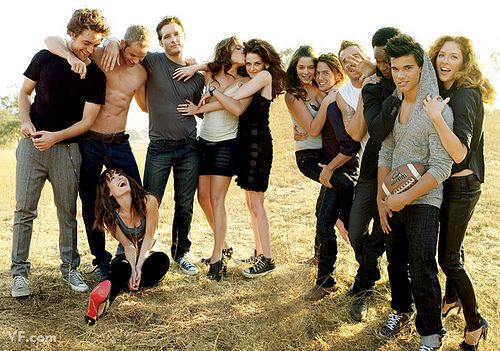
Reunited and It Feels So… Nostalgic: How a Twilight Cast Reunion Highlights the Saga’s Enduring Bite
The internet erupted, as it so often does, with a flurry of excited tweets, shared GIFs, and breathless blog posts. The cause? A cast reunion of Twilight, the vampire romance saga that defined a generation. Seeing Robert Pattinson, Kristen Stewart, and Taylor Lautner – once the faces plastered across every teen magazine and the subject of intense, team-based fandom – back together, even in a virtual capacity, was more than just a stroll down memory lane. It was a potent reminder of Twilight’s enduring impact and the complex tapestry of nostalgia it continues to weave.
The nostalgia surrounding Twilight is a multifaceted beast. For many, the films and books represented a formative period in their lives. They were the soundtrack to awkward adolescence, the fuel for imaginative daydreams, and the shared experience that forged friendships. The reunion acted as a portal, transporting fans back to those simpler times, evoking a sense of comfort and familiarity. The awkward smiles, the inside jokes, and the reminiscing about on-set anecdotes painted a picture of shared history, a communal bond forged in the fiery crucible of global phenomenon. It was a chance to reconnect with a past self, a time when the biggest dilemma was choosing between Team Edward and Team Jacob.
However, the nostalgia wasn’t purely rose-tinted. The reunion also served as a stark reminder of the cultural landscape in which Twilight flourished. The excessive scrutiny placed on the actors’ personal lives, the often-absurd media coverage, and the sometimes-toxic online fandoms were all elements that resurfaced alongside the warm fuzzies. Witnessing the cast, now older and more mature, reflect on their experiences brought into sharp relief the pressures they faced and the often-unrealistic expectations placed upon them. It was a reminder that fame, especially at such a young age, comes with a heavy price.
Furthermore, the reunion triggered a re-evaluation of the Twilight saga itself. While many hold it dear to their hearts, the reunion also opened the door for more critical discourse. Discussions about the problematic power dynamics in the central relationship, the romanticization of unhealthy obsession, and the lack of representation in the narrative resurfaced. The nostalgia was tempered by a contemporary lens, forcing a reckoning with the aspects of the saga that haven’t aged as gracefully.
Beyond the individual experiences of fans, the Twilight reunion highlighted the saga’s enduring impact on popular culture. It reminded us of its role in revitalizing the vampire genre, paving the way for a wave of paranormal romance stories that dominated both literature and cinema for years to come. It also underscored its influence on marketing and branding, demonstrating the power of fan engagement and the potential for a dedicated fanbase to elevate a project to unprecedented heights. Twilight may have faded from the mainstream consciousness, but its DNA is still visible in countless contemporary works.
In conclusion, a Twilight cast reunion is more than just a casual get-together; it’s a potent cultural event that unlocks a flood of complex emotions. It evokes a powerful sense of nostalgia, transporting fans back to a pivotal period in their lives, while simultaneously reminding them of the often-problematic aspects of the saga and the intense pressures faced by its stars. It serves as a testament to Twilight’s lasting influence, highlighting its impact on popular culture and its continued relevance in contemporary conversations about romance, representation, and the complexities of fandom. The saga may be over, but its legacy, and the nostalgia it generates, continues to bite.
